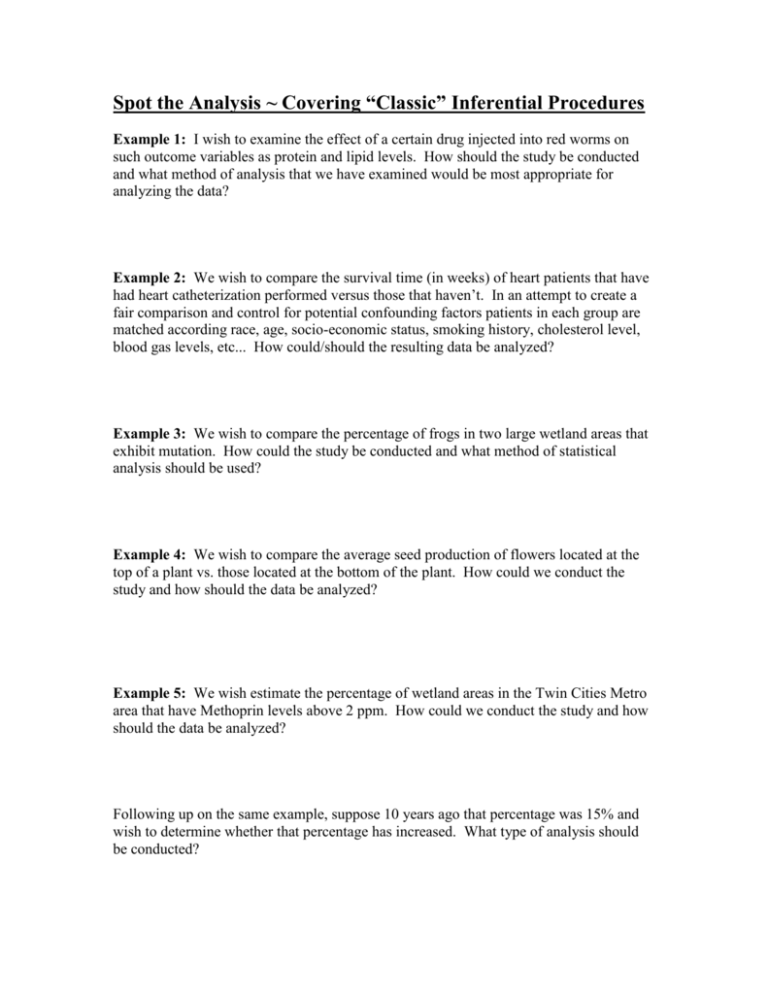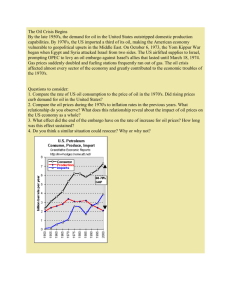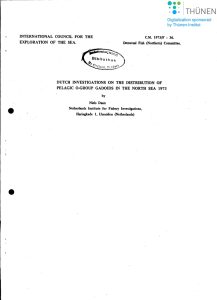Spot the Analysis ~ Covering “Classic” Inferential Procedures
advertisement

Spot the Analysis ~ Covering “Classic” Inferential Procedures Example 1: I wish to examine the effect of a certain drug injected into red worms on such outcome variables as protein and lipid levels. How should the study be conducted and what method of analysis that we have examined would be most appropriate for analyzing the data? Example 2: We wish to compare the survival time (in weeks) of heart patients that have had heart catheterization performed versus those that haven’t. In an attempt to create a fair comparison and control for potential confounding factors patients in each group are matched according race, age, socio-economic status, smoking history, cholesterol level, blood gas levels, etc... How could/should the resulting data be analyzed? Example 3: We wish to compare the percentage of frogs in two large wetland areas that exhibit mutation. How could the study be conducted and what method of statistical analysis should be used? Example 4: We wish to compare the average seed production of flowers located at the top of a plant vs. those located at the bottom of the plant. How could we conduct the study and how should the data be analyzed? Example 5: We wish estimate the percentage of wetland areas in the Twin Cities Metro area that have Methoprin levels above 2 ppm. How could we conduct the study and how should the data be analyzed? Following up on the same example, suppose 10 years ago that percentage was 15% and wish to determine whether that percentage has increased. What type of analysis should be conducted? Example 6: We have two suppliers of laboratory rats and we are trying to decide which provides us with the best “product”. One of the primary concerns is that the rats should all have the same weights upon arrival, thus we would like to choose the supplier that provides us with the rats having the most consistent weight. What kind of study should we conduct and how should we analyze the resulting data? Example 7: Neuropsychological Dysfunction in Children with Chronic Low-Level Lead Absorption The paper "Neuropsychological Dysfunction in Children with Chronic Low-Level Lead Absorption" published in Lancet, 1, pp. 708-715, March 1975, examined the effects of exposure to lead on the psychological and neurological well-being of children. In summary, a group of children who lived near a lead smelter in El Paso, Texas, were identified and their blood levels of lead were measured. An exposed group of 46 children were identified who had blood-lead levels > 40 micrograms/milliliter in 1972 (or in few cases 1973). A control group of 78 children was also identified with blood-lead levels < 40 micrograms/milliliter in both 1972 and 1973. All children in the study lived in close proximity to the lead smelter. The Data The three sets of variables used in the study could be classified as (1) IQ related measures (e.g. verbal IQ), (2) symptomatic variables (e.g. colic) and (3) neurological function variables (e.g. # finger taps in 10 seconds). In your analysis of these data you should try to answer the following question. General Research Question: WHAT, IF ANY, EFFECT DOES LEAD EXPOSURE HAVE ON THE THREE SETS VARIABLES USED IN THE STUDY? There are potential confounding factors present such as socio-economic status, proximity to plant, proximity to plant in early years of life, total years of exposure, gender, etc. The data is located in the file Leadep.JMP in the Biometry JMP folder The variables in the data file are: Demographic Variables area - residence of child in August 1972 (1 = 0-1 miles from smelter, 2 = 1 - 2.5 miles, 3 = 2.5 - 4.1 miles) First 2 Years? - did the child live near the plant during first two years of life (Yes, No) age - age of child in years followed by months (e.g. 1011 = 10 yrs. 11 mo.) agegroup - age group of child (1 = 0 - 4 yrs., 2 = 5 - 9 yrs, 3 = 10 - 14 yrs., 4 = 15 - 19 yrs.) Gender – Male, Female Social Index - Hollingshead Index of Social Status Psychological Function Variables (i.e. IQs) The variables preceding those defined below are the different individual component scores for the verbal and performance IQ tests (we will ignore these for the purposes of this discussion). iqv - verbal IQ score iqp - performance IQ score (block arrangements, pattern recognition etc.) iqf - total IQ (this is not a direct sum or average of the verbal and performance IQ) Lead Exposure Variables leadgrp - blood lead level group (1 = blood lead level below 40 in both 1972 and 1973, 2 = greater than 40 in both 1972 and 1973 or greater than 40 in 1973 alone, 3 = greater than 40 in 1972 but less than 40 in 1973) Lead Level - indicator of high lead in 1972 or 1973 (High = greater than 40 in 1972 and/or 1973, Low = below 40 in both 1972 and 1973) ld72 - actual lead level in 1972 ld73 - actual lead level in 1973 totyrs - total years of life living in close proximity to the lead smelter Symptomatic Variables Pica - indicator of pica (Yes, No) Colic - did the child have colic (Yes, No) Clumsy - does the child seem abnormally clumsy (Yes, No) Irritated - does the child seem abnormally irritable (Yes, No) Convulsions - does the child have a history of convulsions (Yes, No) Neurological Function maxtap - maximum # of taps from left and right hand trials (removes hand dominance) minvis - minimum reaction time to a visual stimulus from left and right hand trials (removes hand dominance) minaud - minumum reaction time to an auditory stimulus from left and right hand trials (removes hand dominance) maxfwt - maximum # of finger to wrist taps from left and right hand trials (removes hand dominance) POSSIBLE QUESTIONS AND ANALYSES (Questions and possible ways to statistically analyze the data to answer theses questions)











